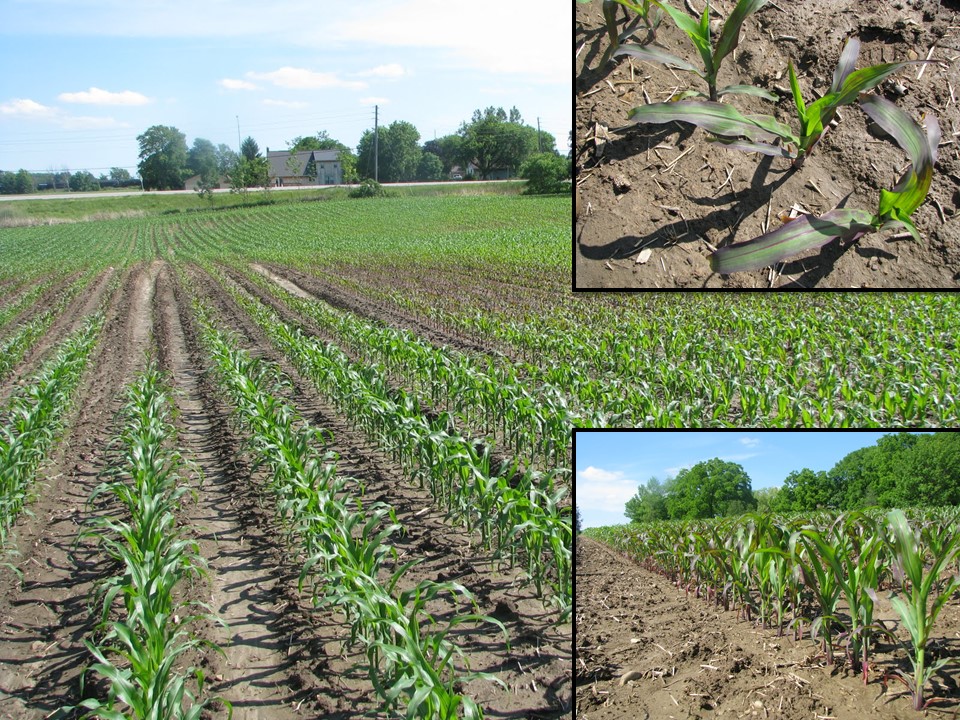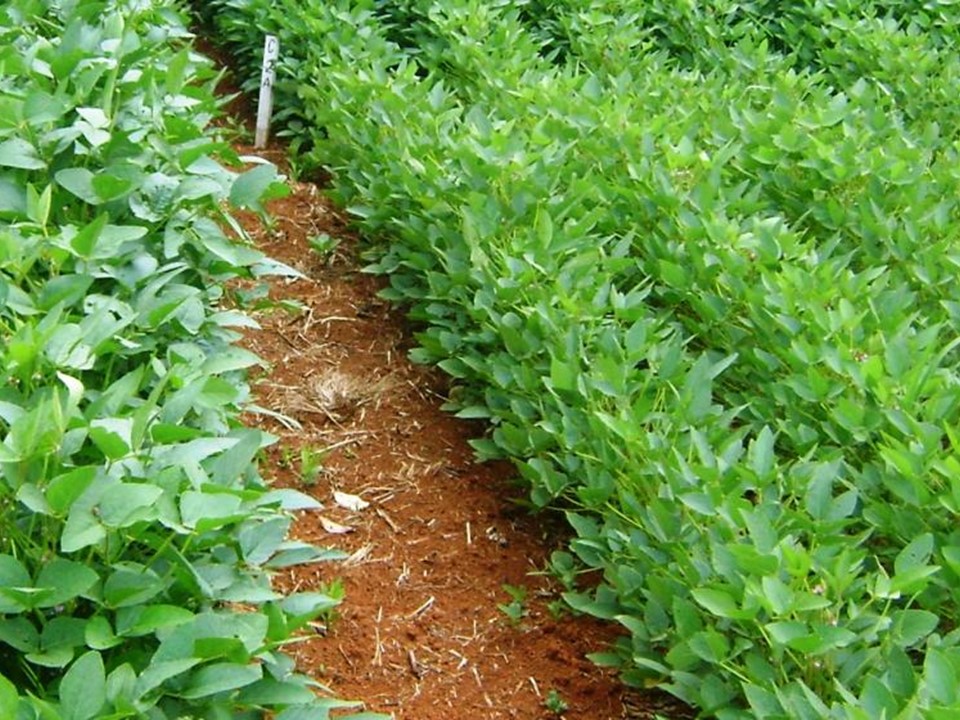| Week 2: Phosphorus |
| In the second installment in our series on nutrient deficiencies in corn and soybean, this week we take quick look at phosphorus: symptomology, sources, and common causes. |
| Unlike nitrogen, phosphorus is generally immobile in the soil profile. In acidic soils (soil pH < 7.0) phosphate in the form of H2PO4– and HPO42- binds with iron (Fe) and aluminum (Al) oxides and hydroxides associated with both 1:1 clays (kaolinite) and 2:1 clays (montmorillonite).
Phosphorus adsorption by these Fe and Al oxides declines with increasing pH, and P availability in most soils is at a maximum near pH 6.5. At low pH, P fixation/adsorption is largely from reaction with Fe/Al oxides and precipitation as AlPO4 and FePO4. As pH increases, solution Fe and Al decreases, which reduces the P adsorption/precipitation and increases P concentration in the soil solution. Consequently, the concentration of total soil P has little or no relationship to P availability to plants. Maintaining optimal soil pH is critical for maintaining plant available soil P to plant root systems. The most critical function of phosphorus in plants is in the storage and transfer of energy. Both adenosine diphosphate (ADP) adenosine triphosphate (ATP) act as energy currency within plants. While P is immobile in the soil (does not freely move in the soil solution) it is considered somewhat mobile in the plant. Therefore, like nitrogen, deficiency symptoms first appear on older (lower) leaves. |
| Corn |
| Phosphorus Deficiency Symptomology
Plant – Plants will be stunted and appear to be a dark green to bluish green. Leaves – Symptoms appear first on older (lower) leaves. Leaf tips and margins will be reddish-purple. Plant and Leaf Tissue Deficiency Levels Early growth – recently mature leaf P of < 0.30%1. Tassel – recently mature ear-leaf P of < 0.25%1. |

| Soybean |
| Phosphorus Deficiency Symptomology
Plant – Stunted growth, lack of canopy, and upright leaves. Leaves – Dark green to bluish leaves with small, interveinal lesions. Symptoms first appear on older (lower) leaves. Plant and Leaf Tissue Deficiency Levels At-flowering – recently mature leaf tissue P (whole trifoliate) of < 0.30%1. |

| Common Phosphorus Sources | ||
| Source | Analyses | % Phosphorus |
| Triple superphosphate | 0-45-0 | 45 |
| Di-ammonium phosphate | 18-46-0 | 46 |
| Mono-ammonium phosphate | 11-52-0 | 52 |
| Ammonium polyphosphate | 10-34-0 or 11-37-0 | 34 or 37 |
| Common Causes of Phosphorus Deficiency |
| 1. Cold soils |
| 2. Compacted soils |
| 3. Side wall compaction |
| 4. Anything that restricts root growth |
| 5. Low pH |
| Corrective Measures | |
| In-Season | |
| Top dress fertilizer. | |
| Post-Harvest | |
| Calcareous lime if low pH is the underlying cause. | |
1Campbell R.A. 2013. Reference Sufficiency Ranges for Plant Analysis in Southern Region of the United States. Southern Cooperative Series Bulletin #394. North Carolina Department of Agriculture and Consumer Services Agronomic Division, Raleigh, NC.

